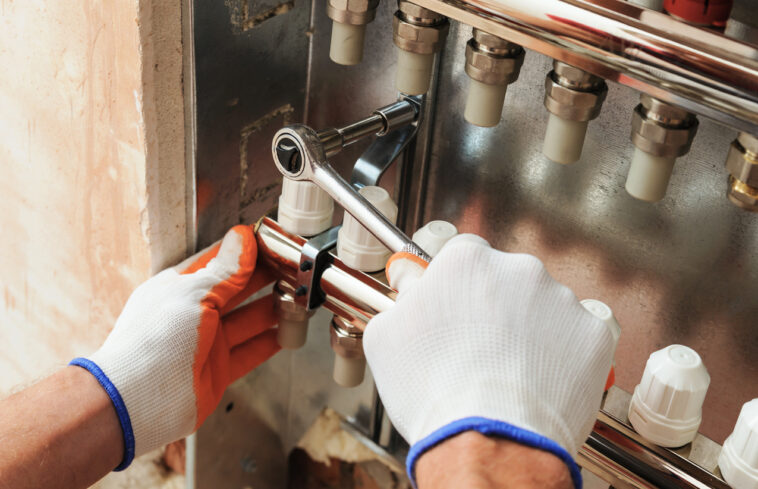When the temperatures start to drop, having an efficient heating system in place is essential for maintaining a comfortable home. Whether you’re replacing an outdated system or installing one for the first time, understanding the process can help you make informed decisions. Heating System Installation involves more than just selecting a unit—it requires careful planning, professional expertise, and adherence to local codes.
This guide will cover everything you need to know about heating system installation, from choosing the right system to understanding the installation process and ensuring energy efficiency.
Choosing the Right Heating System
There are several types of heating systems available, each with its own benefits and considerations. Before installation, it’s important to evaluate which system best suits your home’s size, climate, and energy needs.
1. Furnaces
Furnaces are one of the most common heating systems in homes. They use gas, oil, or electricity to generate heat, which is then distributed through ductwork. High-efficiency furnaces can significantly reduce energy costs and provide consistent warmth throughout the home.
2. Heat Pumps
Heat pumps are an energy-efficient alternative to traditional heating systems. They work by extracting heat from the outside air or ground and transferring it indoors. While they function well in moderate climates, they may require a backup heat source in extremely cold temperatures.
3. Boilers
Boilers use water to distribute heat through radiators or underfloor heating systems. They are known for providing steady and even heat without the use of ductwork. However, installation costs can be higher compared to other systems.
4. Ductless Mini-Split Systems
Ductless mini-splits provide zoned heating and cooling without the need for extensive ductwork. They are an excellent option for homes with space limitations or for adding heating to specific areas of the house.
Factors to Consider Before Installation
Installing a heating system is a significant investment. Before making a decision, consider the following factors:
1. Energy Efficiency
Opting for a high-efficiency heating system can reduce energy consumption and lower utility bills. Look for systems with high Annual Fuel Utilization Efficiency (AFUE) ratings for furnaces and high Heating Seasonal Performance Factor (HSPF) ratings for heat pumps.
2. Home Size and Layout
The size and design of your home will influence the type and size of heating system you need. An improperly sized system can lead to inefficiency, higher energy costs, and inconsistent heating.
3. Installation Costs
The cost of heating system installation varies based on the type of system, labor, and additional materials needed. While it may be tempting to opt for the lowest cost option, investing in quality installation ensures long-term efficiency and reliability.
4. Maintenance Requirements
Regular maintenance is key to keeping your heating system running efficiently. Before installation, consider the long-term maintenance needs and costs associated with different systems.
The Heating System Installation Process
Understanding the steps involved in heating system installation can help homeowners prepare for the process and ensure a smooth experience.
1. Initial Assessment
A professional HVAC contractor will assess your home’s heating needs, evaluate the existing infrastructure, and recommend the best system based on efficiency and budget.
2. Removing the Old System (If Applicable)
If you’re replacing an old system, the existing unit will need to be removed safely, following proper disposal guidelines. This step may also involve updating ductwork or electrical components.
3. System Placement and Installation
The new heating system is installed according to manufacturer specifications and local building codes. This step includes connecting ductwork, electrical wiring, and fuel lines, if applicable.
4. Testing and Calibration
Once installed, the system is tested to ensure proper functionality, efficiency, and airflow distribution. Adjustments are made to optimize performance.
5. Final Inspection and Homeowner Guidance
The final inspection ensures that everything meets safety standards. The HVAC technician will also provide guidance on operating the system and performing basic maintenance tasks.
Ensuring Long-Term Efficiency
Proper installation is just the first step—maintaining your heating system is essential for long-term efficiency and performance. Here are some key maintenance tips:
1. Regular Filter Replacement
Changing the air filter every 1-3 months prevents dust buildup, improves air quality, and enhances system efficiency.
2. Annual Professional Maintenance
Scheduling annual maintenance checks can help identify potential issues before they become costly repairs.
3. Sealing Leaks and Insulating the Home
Ensuring that your home is well-insulated and free from air leaks can maximize heating efficiency and reduce energy waste.
4. Using a Programmable Thermostat
Installing a programmable thermostat allows you to set temperature schedules, optimizing energy use and reducing heating costs.
Conclusion
A well-installed heating system can provide years of comfort and efficiency, making it an essential investment for any homeowner. By choosing the right system, working with experienced professionals, and prioritizing maintenance, you can ensure optimal performance and energy savings. For reliable installation services and expert guidance, Bay Air HVAC offers professional solutions tailored to your heating needs.
This post was created with our nice and easy submission form. Create your post!



